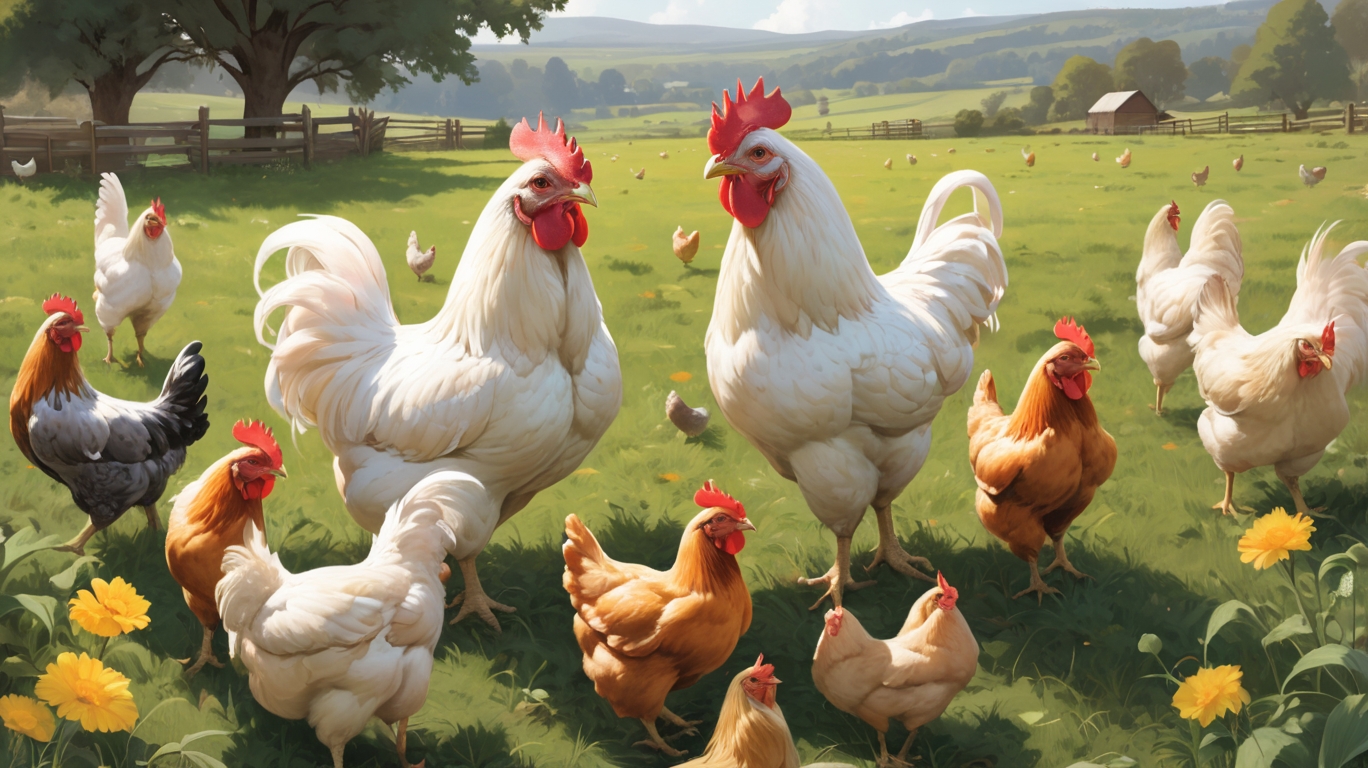How to Raise Free-Range Chickens: A Gentle Guide to Happy, Healthy Birds
Raising free-range chickens is a rewarding experience that allows your flock to enjoy fresh air, sunshine, and the natural behaviors they love. Unlike confined chickens, free-range birds have the freedom to forage, dust bathe, and explore, leading to healthier, happier lives. If you’re considering giving your chickens more space to roam, here’s a calm and practical guide to getting started.

1. Choose the Right Breed
Not all chicken breeds thrive in free-range environments. Some are more independent, hardy, and better at foraging than others. Consider breeds like:
- Rhode Island Reds (excellent foragers, hardy)
- Plymouth Rocks (calm, good layers)
- Australorps (gentle, great egg producers)
- Orpingtons (docile, cold-hardy)
If predators are a concern, avoid breeds that are overly flighty or less aware of their surroundings.
2. Provide a Safe and Secure Coop
Even free-range chickens need a secure coop for nighttime protection. Ensure your coop has:
- Proper ventilation (to prevent respiratory issues)
- Nesting boxes (one for every 3-4 hens)
- Roosting bars (chickens prefer sleeping off the ground)
- Predator-proofing (sturdy locks, hardware cloth instead of chicken wire)
A well-designed coop keeps your chickens safe from raccoons, foxes, and other nighttime threats.
3. Offer Shelter and Shade in the Run
While free-ranging, chickens need places to escape harsh weather and predators. Consider:
- Trees or shrubs (natural shade and hiding spots)
- A movable chicken tractor (for rotational grazing)
- Simple shelters (a small A-frame or lean-to for sudden rain)
If your area has hawks or eagles, overhead netting or covered runs can help protect your flock.
4. Ensure Access to Fresh Water and Supplemental Feed
Even though free-range chickens forage for bugs and greens, they still need:
- Clean water (changed daily to prevent algae and bacteria)
- Quality feed (layer pellets or crumbles for balanced nutrition)
- Grit and oyster shell (helps digestion and strong eggshells)
Scatter treats like mealworms or scratch grains to encourage natural foraging behavior.
5. Protect Against Predators
Free-ranging comes with risks, so take precautions:
- Supervise young or vulnerable birds (bantams are more at risk)
- Use guardian animals (dogs, geese, or even roosters can help alert the flock)
- Lock chickens in the coop at dusk (most predators hunt at night)
Motion-activated lights or radios can also deter daytime predators like foxes and coyotes.
6. Let Them Roam Gradually
If your chickens have been confined, introduce free-ranging slowly:
- Start with short, supervised outings.
- Expand their range over time as they learn their home base.
- Train them to return at dusk by offering treats in the coop.
Chickens are creatures of habit and will usually return on their own once they establish a routine.
7. Enjoy the Benefits
Free-range chickens often lay richer, more flavorful eggs, and their natural behaviors make them more content. Watching them scratch, peck, and sunbathe is a peaceful reminder of the simple joys of raising poultry.
By providing safety, space, and care, you’ll have a thriving flock that enjoys the freedom they deserve. Happy chicken keeping!